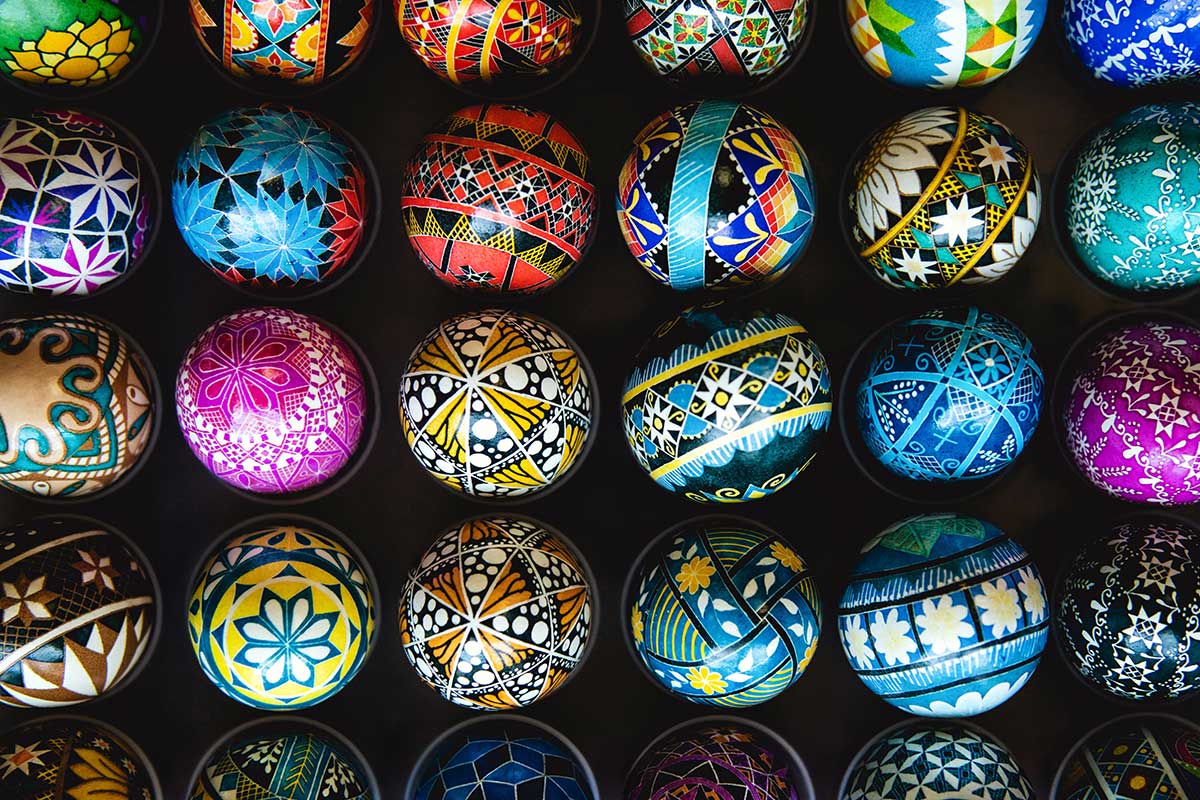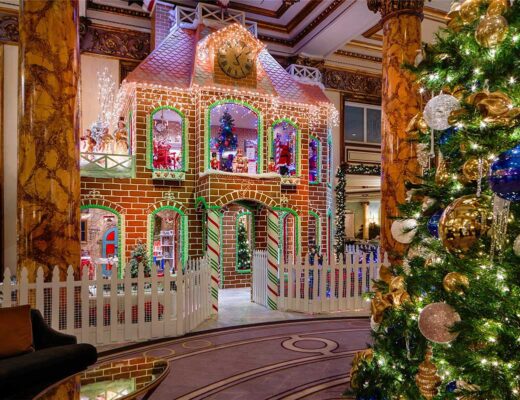Spring is celebrated in many ways, whether it is celebrating Easter, observing the spring equinox, or welcoming nature’s rebirth and the return of warm weather. Here is a list of 10 spring traditions from around the world that could inspire you to embrace the new season!
Martisor (Romania)

Martisor is celebrated every year on March 1st and signifies the beginning of spring. Women and young girls wear a brooch with an attached braided red-white string called “Martisor.” Martisor represents the new season coming to life and usually is given to women by men as a sign of appreciation. The two braided strings also have a related meaning: red represents life (or spring), and white signifies purity (or winter). Martisor is worn for the first eight days of March, and after that, women tie the red and white string to a blossoming tree for good luck.
Butter Lambs (Poland, Russia)

@Malczewski’s Butter Lambs
Butter Lambs are molds of butter shaped like lambs, and they are a central piece for Eastern tables in Eastern and Central Europe. Today, you can buy butter lambs from the stores, but traditionally they are homemade. When you eat a butter lamb, you always have to start from the tail, leaving the head last.
Water Festival (Thailand)
The water Festival or Songkran, takes place every year in Thailand. The celebration also marks the Thai New Year, and it’s happening in April, Thailand’s hottest month. Water is a powerful symbol for Thai culture; it represents washing away the old year and welcoming the new one. During Songkran festivities, people take to the streets and throw buckets of water at each other in a cleansing ceremony. This is also a very popular celebration among tourists visiting Thailand this time of the year.
Nowruz (Central Asia)

Nowruz means “new day” in Persian, a traditional Iranian way to welcome spring. It is celebrated around the spring equinox as a feast for nature’s rebirth. The main element of the Nowruz celebration is the festive table containing seven ingredients associated with spring: dried fruit, apples, garlic, sumac, sprouts, pudding, and vinegar.
READ MORE: Plum Dumplings Recipe
Egg Decorating (many parts of the world)

Decorating eggs is a tradition found throughout the world. In many cultures, eggs represent rebirth and coming back to life, which is one reason they are associated with spring celebrations. For Eastern European countries, decorating eggs plays an important role in Easter traditions. In many parts of Europe, this tradition has roots that precede Christianity. Today, decorating eggs for Easter comes in various ways: waxing, carving, painting, or adding different materials.
READ MORE: How to Decorate Easter Eggs with Whipped Cream
Spring Equinox in Teotihuacán (Mexico)
In the springtime, people gather around the Teotihuacan Pyramid near Mexico City for a sun ceremonial. Dressed in white shirts and arms raised to the sky, they celebrate the return of the sun and warm weather energy. Some even climb the steps to the pyramid top, believing this is how they get closer to the sun’s energy.
Balancing the Eggs (East Asia)

Balancing eggs is a tradition in Eastern Asia, part of the Li Chun festival. During the spring equinox, people decorate eggs and then try to balance them—this is called the “egg-standing game.” It is believed that during this time, when the sun sits exactly above the equator, eggs can stand more easily. Also, if you successfully balance your egg, you will have luck in the coming year.
Festival of Scrambled Eggs (Bosnia)
In Zenica (Bosnia), eggs are cooked in large pans in the street to mark the start of the warm season. It’s a street party where everybody cooks scrambled eggs and is invited to taste them for free. To the Bosnians, eggs symbolize new life as a new season begins.
READ MORE: Easy Spinach Frittata Recipe
Holi (India)

Holi, also called the Festival of Colors, is a traditional Indian festival that celebrates the return of spring and takes place every year in late February or March. The night before Holi, people gather and light bonfires, and the next day they take to the streets and start a colorful fight with dyed powder (gulal). The festival is happening in many parts of the world and has become a cultural event.
READ MORE: Legends of Untersberg
Sunrise ceremony at Stonehenge (England)
The first day of spring is celebrated at Stonehenge in England with a sunrise ceremony. People gather in light-colored robes to worship nature’s coming back to life and changing seasons. Similar gatherings occur for every season change, in summer, fall, and winter.





No Comments